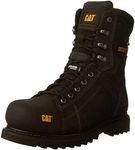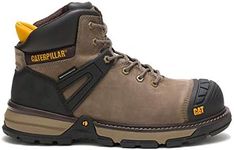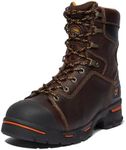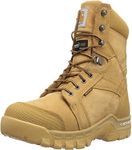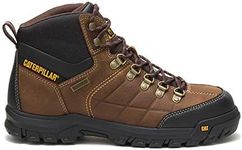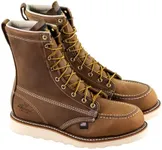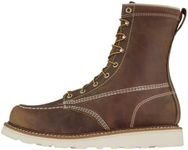Buying Guide for the Best Work Boots With Wide Toe Box
Choosing the right work boots with a wide toe box is essential for comfort, safety, and productivity, especially if you spend long hours on your feet or have wider feet. The right pair should protect your feet, provide enough room to prevent discomfort or blisters, and support you throughout your workday. When shopping, focus on the key features that impact fit, protection, and durability, and always consider your specific work environment and personal needs.Toe Box WidthThe toe box is the front part of the boot where your toes sit. A wide toe box means there is extra space for your toes to spread naturally, which is important for comfort, especially if you have wide feet or foot conditions like bunions. Toe box width can range from standard to wide and extra wide. If your toes feel cramped in regular shoes, look for boots labeled as 'wide' or 'extra wide.' Try them on with your usual work socks to ensure your toes have enough room to move without rubbing against the sides.
Safety Toe TypeWork boots often come with reinforced toe caps for protection, such as steel, composite, or alloy toes. This feature is crucial if you work in environments where heavy objects could fall on your feet. Steel toes offer maximum protection but can be heavier, while composite and alloy toes are lighter and may be more comfortable for all-day wear. If your job requires safety certification, check which type is needed. Choose the safety toe that balances protection and comfort for your specific work tasks.
Material and DurabilityThe material of the boot affects its durability, breathability, and weight. Leather is a common choice for its toughness and water resistance, while synthetic materials can be lighter and more breathable. If you work outdoors or in wet conditions, look for waterproof or water-resistant materials. For indoor or lighter-duty work, breathable fabrics may keep your feet cooler. Match the material to your work environment for the best performance and longevity.
Sole and TractionThe sole of the boot determines how well it grips surfaces and absorbs shock. Slip-resistant soles are important if you work on wet or oily floors, while thick, cushioned soles help reduce fatigue if you stand or walk a lot. Some soles are designed for specific surfaces, like concrete or uneven terrain. Think about where you’ll be wearing the boots most often and choose a sole that provides the right balance of grip and comfort for those conditions.
Fit and SupportA good fit is essential for preventing blisters and foot pain. Look for boots with adjustable lacing or straps to help you get a snug fit around your foot and ankle. Arch support and cushioning inside the boot can make a big difference if you’re on your feet all day. If you have specific foot issues, such as flat feet or high arches, consider boots with removable insoles so you can use your own orthotics. Always try on boots at the end of the day when your feet are slightly swollen to ensure the best fit.
WeightThe weight of the boot can affect your comfort and energy levels, especially if you walk a lot during your workday. Heavier boots often provide more protection but can be tiring to wear for long periods. Lighter boots are easier to move in but may offer less protection. Consider how much walking or standing you do and balance the need for protection with the desire for lighter footwear.
